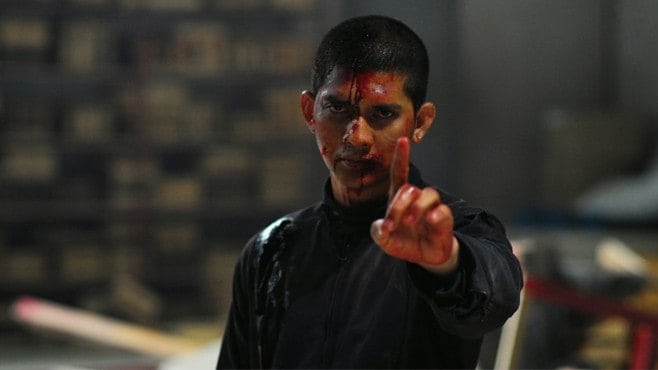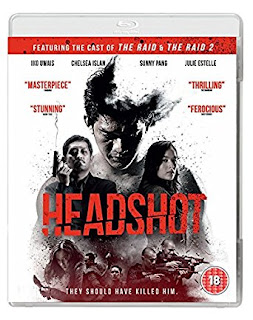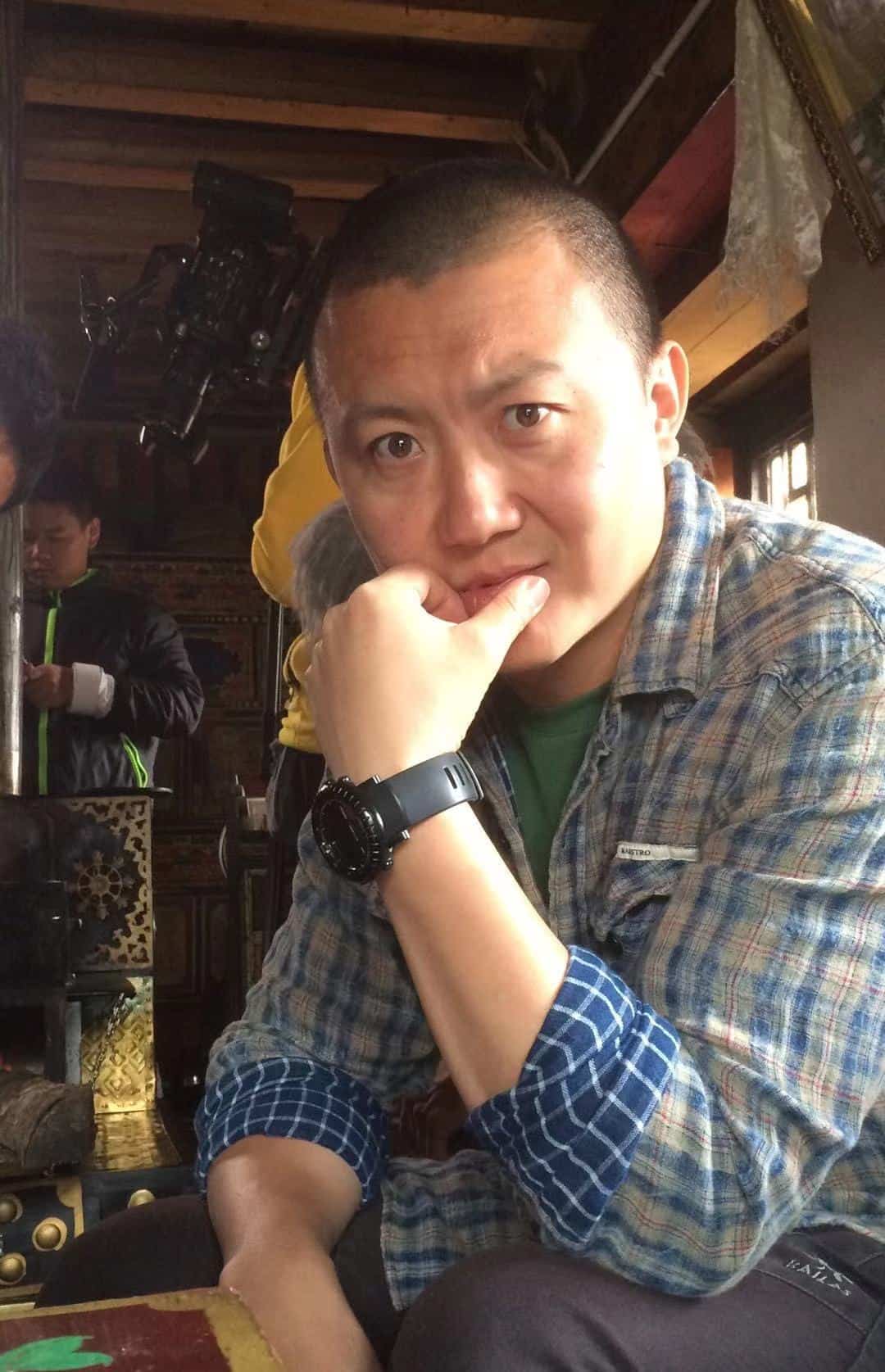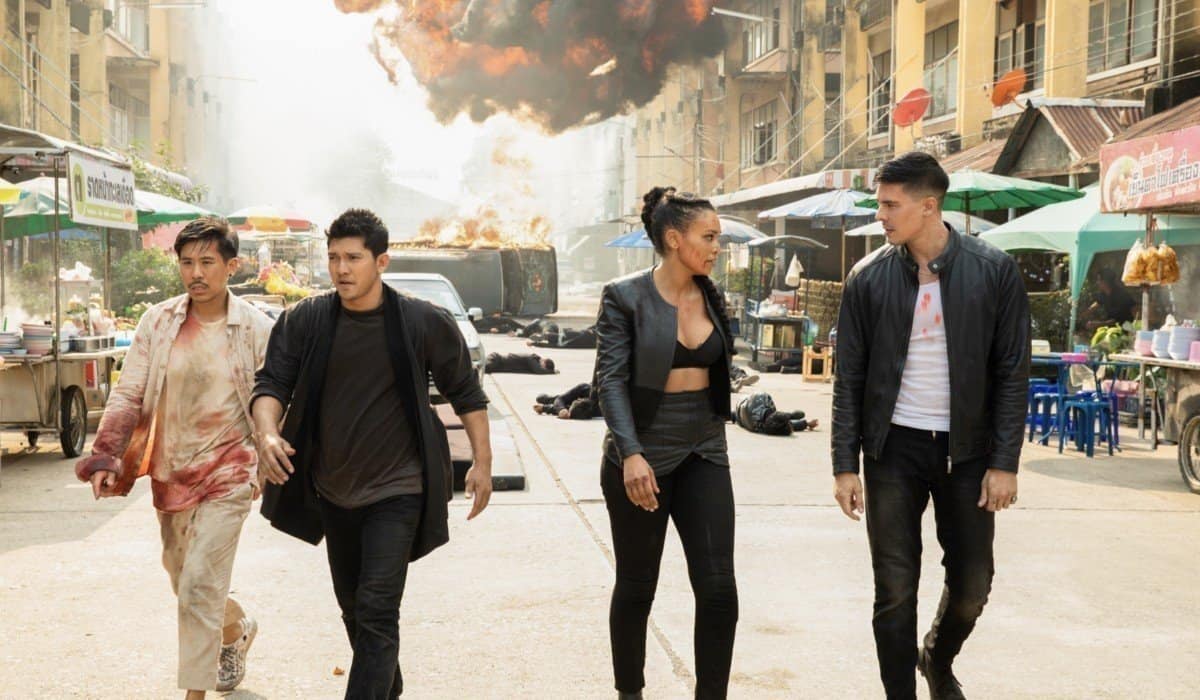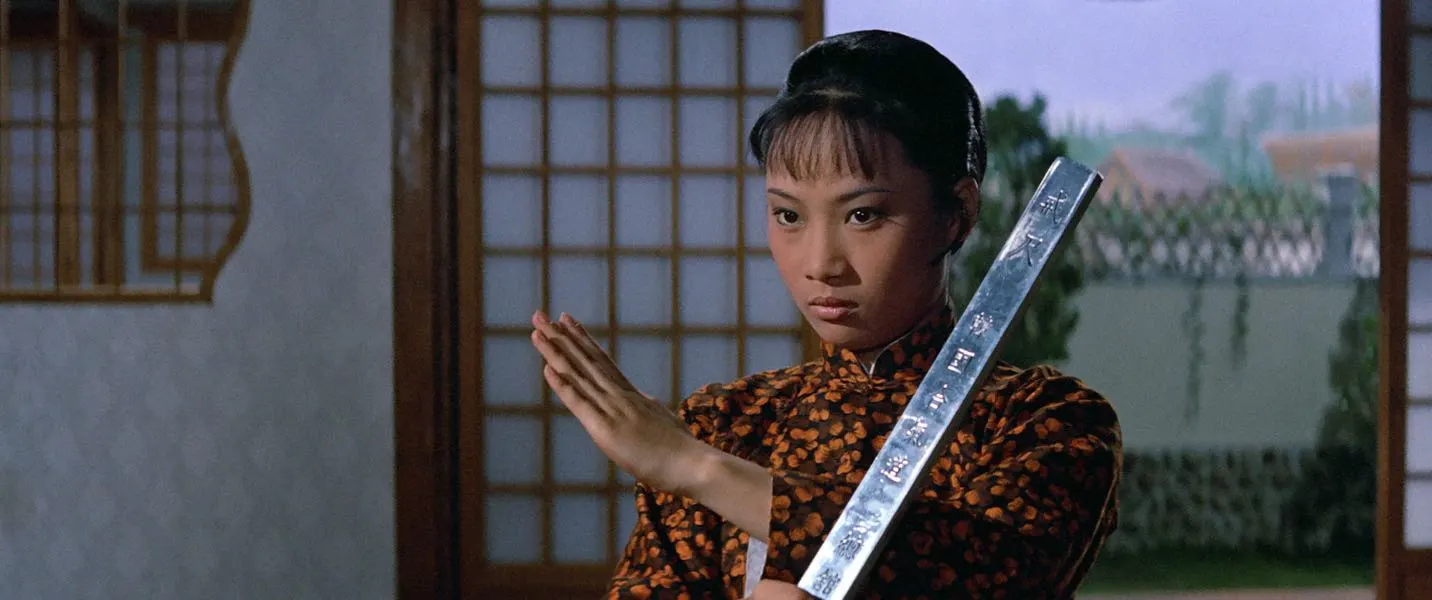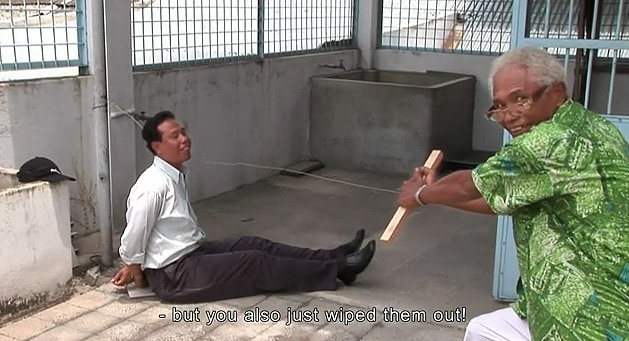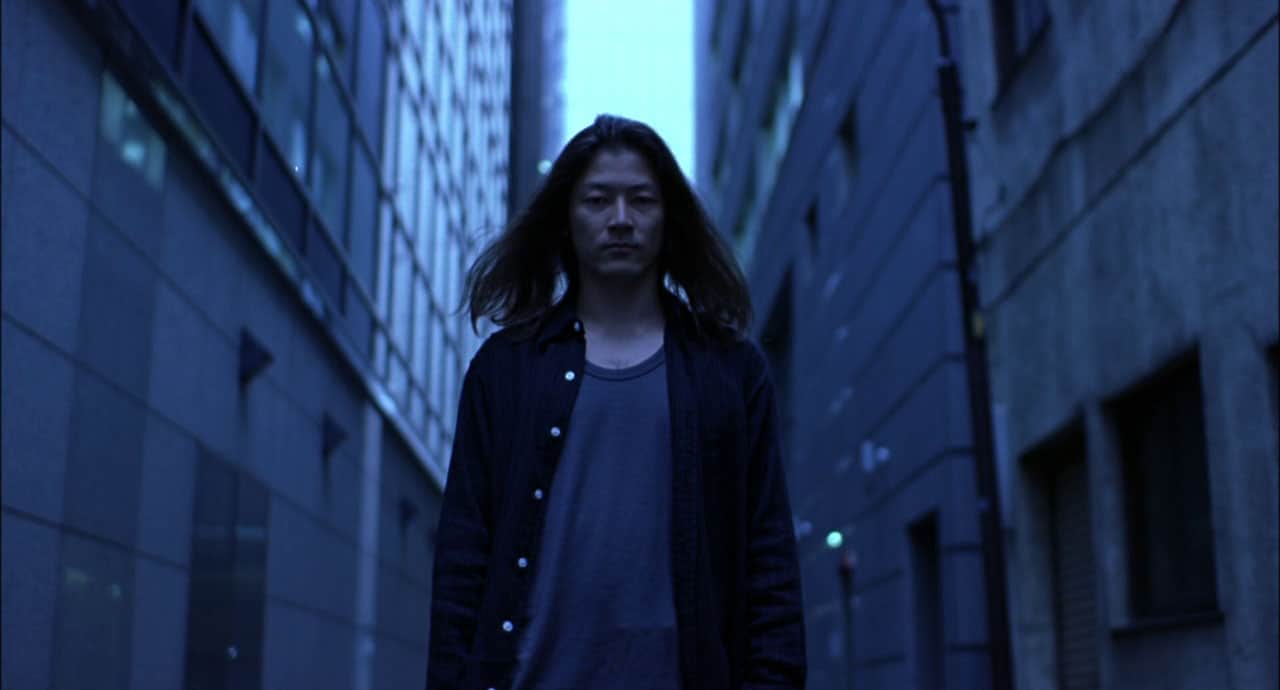In a discussion with my friend Bastian Meiresonne, we agreed (and by agreed I mean he pointed out some facts and I concurred) on a number of things regarding Asian martial arts films. For starters, the misconception that martial arts films are one of the main products of the movie industry in the area, since, in fact, it has always been a very small percentage. This misconception owes a lot to Shaw Brothers and Golden Harvest studios, since, particularly the latter, was the one that introduced to the West the likes of Bruce Lee, Jackie Chan and Sammo Hung, subsequently making the average cinemagoer (who does not distinguish between Japanese, Chinese and Korean, at least) to believe that all Asian filmmakers do is produce martial arts films.
However, and although the genre has been dead for years, at least when compared with the number of productions released in the previous decades, some films emerge occasionally here and there, just barely keeping it alive, with productions like “The Raid” and “Ong Bak” gaining much exposure, even to the West. Here are some of the best of the latest years (after 2010), which follow in the footsteps of these two, in terms of genre, as we are all waiting to watch Wolf Warrior 2, which is supposed to even resurrect the genre. And yes, the absence of Ip Man movies is on purpose. Enough!
With a focus on the quality of the action scenes, here are 7 great Asian Martial Arts Movies
1. Mrs K (Yuhang Ho, 2016, Malaysia-Hong Kong)
Mrs K is a housewife, happily married to a gynecologist, and mother to a teenage girl who is also a martial artist. However, underneath the calm, happy and motherly figure resides something else, as Mrs K used to be part of a crime ring. As her former comrades are being killed one by one, a rather unpleasant former police officer visits her house and confronts her about the past. Furthermore, another man, who seems to know her quite well, resurfaces, and along with his henchman, kidnaps her daughter. Now, Mrs K has to face all of her ghosts.
The film starts in a rather violent fashion, with the gory deaths of three men (HK veterans Fruit Chan and Kirk Wong, and Malaysian director Dain Iskandar Said). Soon, however, it tones down, with a scene where we are introduced to the housewife/mother/fighter Mrs K and then through the presentation of the life of a family who seems very normal. After the villains enter the story, the film becomes a thriller, as the agony for the fate of the daughter increases, only to transform again into a violent action film in the end. This build up, through the change of genres (action, action comedy, thriller, and action again) works wonders for the film, as it induces it with a depth rarely seen on the genre, through the analysis of the characters, that sets it apart from the plethora of similar productions. Some incoherence in the scenario, however, could not be missing.
Directing a martial arts film with a 57-year-old woman as the protagonist is not an easy task, but Yuhang Ho managed to turn it to his advantage, by highlighting the vulnerability of his main character. In that fashion, Mrs K is beaten unconscious a number of times, and seems to hurt and get more tired by every move she takes in her fights. This tactic induces the film with a reinvigorating sense of realism, rarely seen in this kind of films, although in the end, the HK style of action takes over.
Despite the aforementioned realism, the action scenes look quite impressive, particularly during the ending sequences, where Adam Chung-Tai Chan's action choreography finds its apogee. I am not sure how much part Kara Hui actually took in those, but she looks quite good in the ones her face is visible. In that fashion, Sharon Chong and Mun Thye Soo have done a wonderful job editing the scenes where she is doubled with the ones she is actually there.
2. Headshot (Mo Brothers, 2016, Indonesia)
The film revolves around a man suffering from amnesia, who is found on a beach and brought to the hospital by a doctor, Ailin, who treats him and even gives him a name, Ishmael. However, Ishmael seems to be involved in criminal organization, whose boss, Lee, has just escaped from prison, and is now looking for him, along with the other members of the group, most of whom are martial arts masters. After some time, an even worse secret is revealed.
Mo Brothers direct a film that shows its nature from the first scene, where a rather violent battle ensues between the jailers and the people who try to break Lee free from the prison. The combination of martial arts, guns, and gore starts in this scene, and continues through the duration of the film, in the most impressive fashion.
Before Indonesian productions entered the martial arts genre, I used to think that HK has presented everything there is to be in the genre. Films like The Raid and Headshot however, managed to reinvigorate the category, and this becomes particularly evident here in the many one-on-one fights, where a number of unprecedented actions take place. The one in the office space is a distinct sample of this trait where everything is used as a weapon, including the ceiling. The fact that these scenes occur in completely different setting, including the forest, the beach, and the cell is another testament to the film's quality.
In that fashion, the action choreography by Iko Uwais (The Raid) and his stunt team is truly outstanding, and the fact that they implemented different martial arts styles including Pencak Silat and Wushu, according to the background of each actor, highlights the work done in the department. Furthermore, Indonesians seem to have perfected the use of knives in the action scenes, a trait presented in a number of scenes. Add to that the great cinematography by Yunus Pasolang, who uses slow motion and abrupt close ups in elaborate fashion, and the manic editing of Arifin Cu'unk and you have one of the most impressive martial arts ever to be seen on screen.
Buy This Title
3. Jailbreak (Jimmy Henderson, 2017, Cambodia)
Three Cambodian policemen, Dara, Tharoth, Sucheat and a French one, Jean Paul, accompanying a mobster known as Playboy, who is considered the leader of the notorious Butterfly gang, to a high security prison. The mission seems easy enough, but the four policemen find themselves caught in a jailbreak, orchestrated by Madame Butterfly, the real leader of the gang, in order to prevent Playboy from giving information to the autjhorities. Now the four of them have to fight for their lives against Bolo, who has become the leader of the jailbreak, scores of inmates, and two prisoners who are considered monsters, Suicide and Cannibal, while Madame Butterfly and her gang of super-sexy, sword wielding assassins join the fight eventually.
Jimmy Henderson presents a distinct combination of exploitation, martial arts, and b-movie aesthetics, which, finally, is stripped of any kind of drama, romance, or any effort to give depth to a genre that thrives through the lack of it. In that fashion, Henderson does exactly what the category demands. He introduces a number of interesting-looking characters, and lets them kill themselves through continuous action scenes. The four “ultimate” villains represent this trait quite eloquently: Cannibal, whose name implies his human-eating nature, Suicide, a black master of martial arts, Bolo, a street fighter of enormous strength and finally, Madame Butterfly, a katana expert. The duels of the four with the policemen, who use the Cambodian martial art, Bokator, are the most impressive in the film, along with the ones where the four of them fight scores of prisoners, most of which seem to know martial arts, in another distinct, b-movie element.
Another aspect I cherished is that the four protagonists are not invincible in any way, as they are beaten quite a lot to the point of becoming unconscious, while the ending of the film, in similar fashion, definitely leaves way for a sequel. Another trait of the direction is the buildup of the action, which starts generic, but becomes more and more violent, and even gory as the story progresses. Furthermore, there is a sense of somewhat crude, but very fitting humor that lightens up the whole concept, additionally giving it a comic book feel. Lastly, as all martial arts films should, the movie ends with some footage showing bloopers and actual scenes from the shooting.
Godefroy Ryckwaert does a great job in the cinematography department, as he present a truly hellish and claustrophobic environment inside the prison setting, while a number of action scenes are impressively shot. The editing is also great, with Henderson retaining a very fast pace throughout the duration of the film. The action choreographies by Dara Our and Jean Paul-ly are more than impressive, featuring, apart from Bokalor, a number of freestyle techniques, that work quite well in the general, chaotic setting.
4. Broken Sword Hero (Bin Bunluerit, 2017, Broken Sword Hero)
Joi is the son of a poor man, who frequently has trouble with the governor's son and his lackeys, who bully him every chance they get. To his father's disdain, Joi usually retaliates, bringing him in a very difficult position. The situation becomes even worse after Joi trains on his own, since his father does not allow him to learn Mu Thai, and eventually injures the son of the governor. Having no alternate, Joi is forced to leave the town. The story then flashes forward to a grown up Joi, who has become a formidable fighter, earning money in duels organized by two opposing patrons. However, his old foe is still hunting him, and even more, he meets a true Mu Thai master, who beats him to a pulp. The young man decides to go on a trip to become a better fighter by studying under renowned masters, while he changes his name to Thongdee. In his trip, he finds the knowledge he seeks and also friends and romance.
“Broken Sword Hero” is a genuine martial arts film, with the action starting from the first frame and continuing for the whole of the movie, while it finds its apogee when Joi has become Thongdee. In that fashion, it follows the well known paths of the HK films of the category, that include a man who thinks he is a great fighter, his humiliating loss, and the subsequent training that makes him worth of facing the man who bested him. This path however, is rather impressive through the presentation of the different techniques Thongdee learns, which even include kung fu from a Chinese theatre expert. Through these sequences, the film function as a true martial arts odyssey.
As Bin Bunluerit had a purpose to introduce Mu Thai superstar Buakaw Banchamek to the world, the film focuses much on his abilities, and he delivers in impressive fashion, highlighting his prowess as a martial artist, which benefits the most of his even more impressive ability in jumping. Accordingly, the scenes where he is fighting in the air are the most distinguishable among a plethora of great ones, with Bunluerit making great use of slow motion to capture this prowess. At the same time, the action choreographies are outstanding, focusing mostly on one-on-one duels, with the tendency finding its apogee in the arena, another symbol of the category.
The scene that definitely stays in memory, though, is the one where Thongdee faces a number of fighters who ride horses, by jumping high enough to hit them in the head. The moment he stops one of the animals by hitting it in the head is one of the most spectacular in the movie (I hope the people championing animal rights will forgive me).
Buy This Title


